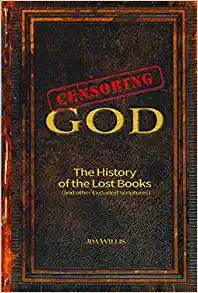
Why isn’t the Book of Enoch in the Holy Bible, even though Enoch is referenced multiple times? Why were texts considered sacred by many, excluded by others? Who made the decisions and why?
There are more than 50 books―some of which exist only in fragments while others are complete and whole―that are not included in the biblical canon. Why were they discarded? Most Protestant denominations settled on 66 canonical books of the Bible, while there are 73 for Roman Catholics and 78 for Eastern Orthodox adherents. Why are there these differences of opinion?
We are often taught that the Bible is, in the words of many religious catechisms, “the infallible word of faith and practice.” In reality, the Bible can also be seen as a political document as much as a spiritual one. Ordained minister and theologian Jim Willis examines the historical, political, and social climates that influenced the redactors and editors of the Bible and other sacred texts in Censoring God: The History of the Lost Books (and other Excluded Scriptures). In analyzing why texts were censored, he uncovers sometimes surprising biases. He investigates enigmatic hints of Bible codes and ancient wisdom that implies a greater spiritual force might have been at work. Willis explores the importance of the Book of Enoch, its disappearance, and how it was rediscovered in Ethiopia. He analyzes over two dozen excluded texts, such as Jubilees and the Gospel of Thomas, along with the many references to books that we know about from fragments but remain lost.
Thought-provoking and provocative, Censoring God scrutinizes how sacred texts might have been used to justify the power of the powerful, including the destruction of sacred writings of conquered indigenous cultures because they did not agree with the finished version of the Bible accepted by the Church establishment. This important book looks at the human failings in interpreting God’s words, and through a compassionate examination it brings a deeper understanding of the power and importance of the lost words. With more than 120 photos and graphics, this tome is richly illustrated. Its helpful bibliography provides sources for further exploration, and an extensive index adds to its usefulness.
